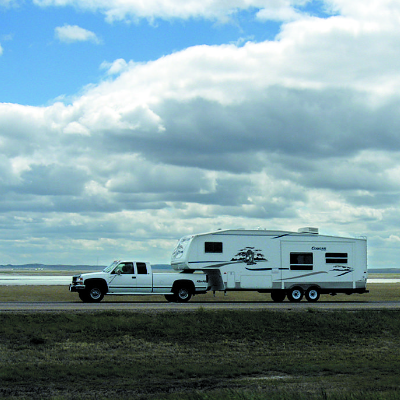Hitches 101
When it comes to choosing a hitch, there are two questions to keep in mind: what do you want to do with your RV, and what is important to you in a camping recreational vehicle?
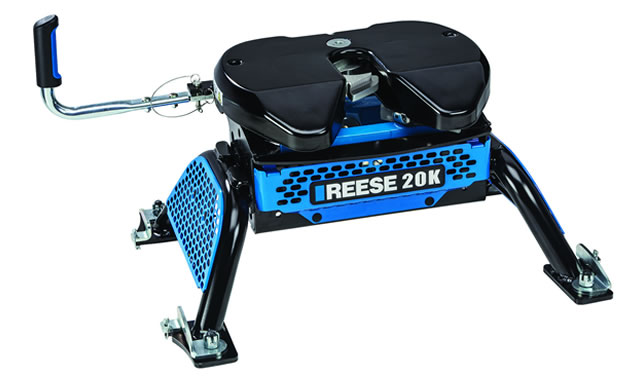
No matter what your buddy says around the campfire, both fifth-wheel hitches and trailering hitches do the job they were designed to do. Granted, each one functions a bit differently, and each style has some advantages and some limitations.
To settle the fifth-wheel versus trailer hitch question for yourself, start with your intended purpose. What do you want to do with your RV, and what is important to you in a camping recreational vehicle? This will help determine which hitch is best for you.
Tom Romero is the director of education and technical content for Horizon Global Americas, the company that owns Reese, manufacturers of trailering and fifth-wheel hitches, and seven other commercial and industrial brands including Draw-Tite hitches. Romero has been enjoying camping and the outdoors since 1968. He now has the responsibility of creating video and text to help people understand the features, the correct installation, and the use and maintenance of the equipment Horizon Global markets. He has a well-earned point of view on hitches and the differences between trailering hitches and fifth-wheel hitches.
Here is what Romero has to say about hitches:
What can a purchaser expect from each kind of hitch?
A tow-behind trailer is typically towed with a weight-distribution hitch system to level the tow vehicle and trailer and with sway control to prevent trailer sway. The weight-distribution hitch bar and ball mount insert into an installed receiver hitch under the rear bumper of the tow vehicle. This receiver hitch includes a hitch ball that is coupled to the trailer as well as weight-distribution bars that extend from the hitch and attach to the trailer A-frame using frame brackets.
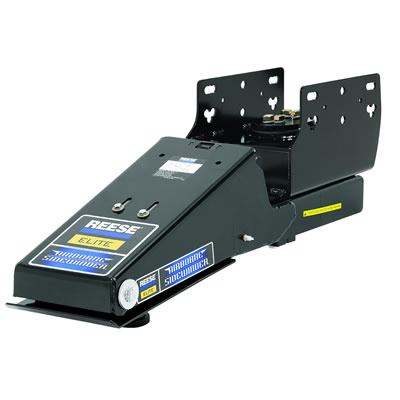
Reese offers two excellent choices in this category: the Steadi-Flex weight distribution with integrated friction sway control using automotive friction material and the top-of-the-line Reese Strait-line weight distribution hitch which includes high-performance dual-cam sway control.
The big advantage of a tow-behind trailer using a weight-distribution hitch and sway-control system is that you can tow with essentially any type of vehicle (e.g., SUV, minivan, sedan or pick-up truck) as long as its rated towing capacity can handle the gross vehicle weight rating of the trailer. Also tow-behind trailers are offered in a large range of lengths from small to large and prices to match.
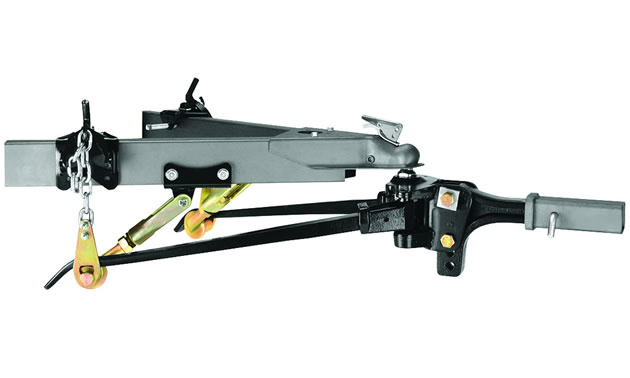
However, some RVers find installing and then removing the weight-distribution and sway-control system each time they tow to be a tad tiring. Honestly, it really is no trouble once you get used to it. Eventually though, some RVers upgrade to a fifth-wheel trailer and hitch for the ease of hook-up and release.
The next type of hitch—a fifth-wheel hitch—has a pin box with a kingpin on the front of a fifth-wheel trailer. The kingpin attaches to a fifth-wheel hitch that is located in the bed of a pick-up truck over the centre of the axle. This allows for higher trailer weight loads.
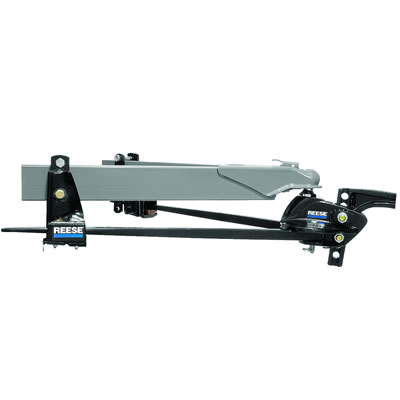
Fifth-wheel RVers appreciate easier hook-ups and unhooks without the need for additional equipment. However, you can only use a pick-up truck to tow a fifth-wheel trailer. Another consideration is if you have a short-bed truck (six-and-a-half feet [approximately two metres] or less) you will require a solution for tight-turning situations in campgrounds and inner city driving to prevent the truck cab and trailer coming in contact with each other in those tight situations.
Reese offers a wide range of fifth-wheel hitches including the all new M5 series with the Talon Jaw, allowing the easiest trailer hook-up and release and quietest ride. Reese also offers many short-bed truck solutions for additional clearance, including sliding fifth-wheel hitches and the innovative Reese Sidewinder trailer premium pin box upgrade that allows up to 90 degrees of worry-free automatic turning, depending on your truck and trailer combination.
What advice do you have for first-time buyers trying to decide between a trailer and a fifth wheel?
Choose a trailer that best fits your needs. Today’s trailers have never been nicer and they are chock-full of innovative technologies and comfortable features; they come in all price levels in both the tow-behind and fifth-wheel trailer categories. Know your tow vehicles’ tow limits and don’t exceed them, and buy the hitching equipment that can easily handle the trailer weight. You get what you pay for! Don’t scrimp on the hitching equipment: premium-featured hitch products are going to give you the best performance and towing experience.
Why would a purchaser choose one hitch style over another?
This really depends on the consumer’s trailer preference, expectation and budget. Once they have decided on the type of trailer they are buying, that will dictate the hitch style. But again, I would recommend against scrimping on the hitching equipment.
Which hitch requires the most learning to operate?
All hitches require that you learn how to safely and properly operate them. Reese provides detailed installation, use and maintenance instructions with all of its hitch products. Make a checklist and use it every time you tow. Furthermore, Reese has videos that walk you through everything you need to know about operating your weight-distribution hitch, fifth-wheel hitch and more. Check out our product education videos at www.reeseproducts.com.
What are the risks and benefits of each style hitch?
There is no risk if you operate properly and match weight ratings to trailer on either style hitch. To recap, a weight-distribution hitch for a tow-behind allows you to tow with any vehicle, which gives you lots and lots of trailer options. A fifth-wheel hitch allows you to tow larger fifth-wheel trailers without the need for additional equipment that has to be installed when towing or removed when you are not.
No matter which style of hitch you choose, be confident in making the choice based on your specific needs. This year when that fireside chatter starts up, hold your ground. You made the choice you did––now you have the facts to back it up.
See you fireside.





